Bitcoin's Trajectory - Crypto Academy S4W5 - Homework Post for @imagen
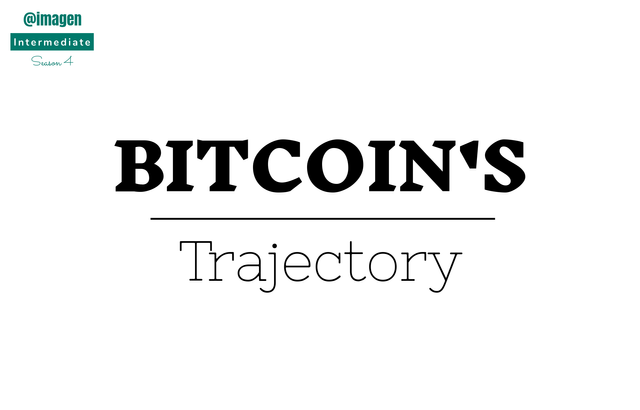

Q.1. How many times has Bitcoin been "halved"? When is the next expected? What is the current amount that Bitcoin miners receive? Mention at least 2 cryptocurrencies that are or have halved.

The pioneer of blockchain technology which is Bitcoin, has a number of underlying innovations and protocols that contributed to it's huge success. Through one of such innovations, bitcoin was preprogrammed to reduce it's mining rewards - the only way bitcoin is minted, by half.
The first halving took place in 2012 and in total, there have been 3 halving sessions in bitcoin's history.
Halving takes place after every 210,000 blocks or approximately after every 4 years. The next bitcoin halving is expected in 2024.
Currently, bitcoin miners receive 6.25 BTC for each block successfully mined.
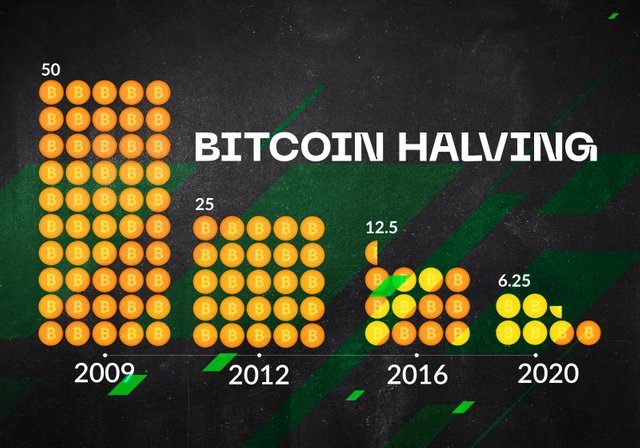
Source
Asides from bitcoin, some other altcoins undergo halving. They include
Litecoin and
Bitcoin cash.

Q.2. What are consensus mechanisms? How do Proof-of-Work and Proof-of-Staking differ?

Blockchain is a distributed ledger based on a decentralized network of nodes. For this network run by different nodes to function properly, there need to be a mechanism by which it will function.
Also, since this network is not manned by a central authority but by each of the participating nodes in the network, this mechanism has to be a consensus, i.e an agreed upon manner of operation, agreed and implemented by participating nodes.
Consensus mechanisms therefore are agreed upon manners/methods of operations deployed in decentralized systems e.g blockchain networks, for efficient running of the decentralized systems.
There are different types of consensus mechanisms in use today and one thing common with most of them is that they seem to demand 'proof'. The types of consensus mechanisms available today include: Proof of Work, Proof of Stake, Delegated Proof of Stake, Proof of History, Proof of Brain, etc.
Let's just consider Proof of Work and Proof of Stake for the purpose of this homework task.
PROOF OF WORK VS PROOF OF STAKE
PROOF OF WORK
Proof of Work is a consensus mechanism known for its inclusion of mining activities. In this consensus mechanism, some specific nodes in the network, known as miners nodes, have to compete to verify a block by performing really complex mathematical calculations.
These complex mathematical calculations require loads of energy to solve as it involves energy hungry heavy equipments known as miners rigs which are just as expensive too. The bright side is that, when a miner completes a block, some coins are passed into their wallets as rewards. In PoW, this is how coins are created.
A miner who has 51% of the computing power can carry out a 51% attack on the system. In addition, miners are often resorted to selling their coins to afford computing resources. This could increase the supply in the market and lead to price reduction of the asset.
PROOF OF STAKE
Proof of Stake employs a different approach. It gives the power to mine not based on ability to solve complex mathematical calculations using energy hungry and expensive environment threatening equipments, but based on the amount of coins the receiver has staked. Simply put, Proof of Stake replaces computing power with staking power.
On Proof of Stake, you can only mine block according to the amount of coins you own i.e a miner who owns 2% of the coins can theoretically only mine 2% of the blocks. This means, no need for solving complex maths. Use the money instead to buy coins to acquire mining power.
To carry out a 51% attack on a Proof of Stake system, a miner will need to have 51% of the coins. Though this is not impossible but for a major coin it will be quite expensive and to think that the attack will lead to massive distribution in the coin as people might begin selling due to lack of confidence in the security status of the coin which could lead to a drop in price, the attacker will end up attacking themselves as the value of their 51% will drop significantly.
Here are major differences between the two coins in summary.
| PoW | PoS |
|---|---|
| Requires miners to mine coins by solving complex mathematical calculations | Doesn't require miners to mine coins by solving complex mathematical calculations |
| Requires expensive equipment and energy | Requires the miner to only possess coins |
| Involves computing power | Replaces computing power with staking |
| Miners have to sell coins to mine | Miners have to buy coins to mine |
| Creates environmental concerns | Resolves environmental concerns |
| 51% attack require 51% computing power | 51% attack requires 51% of the coins |
| Cost of 51% attack discourages attack | Loss of value of 51% coins after attack discourages attack |

Q.3. Enter the Bitcoin explorer and indicate the hash corresponding to the last transaction. Show Screenshot.

I used the bitcoin explorer on blockchain.com.
As at the time I opened the bitcoin block explorer, this was the last transaction at 08:20
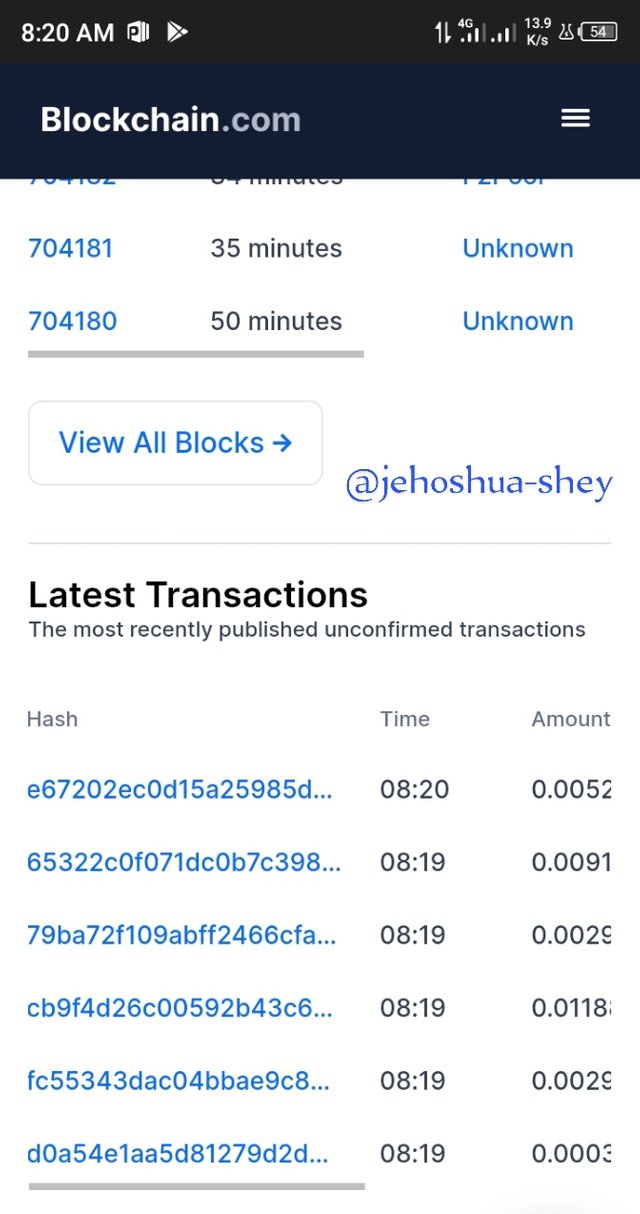
This was the hash of the latest transaction -
e67202ec0d15a25985d97a30d7e2fa6989dce08d1cd86f06eaadee7e219c6209
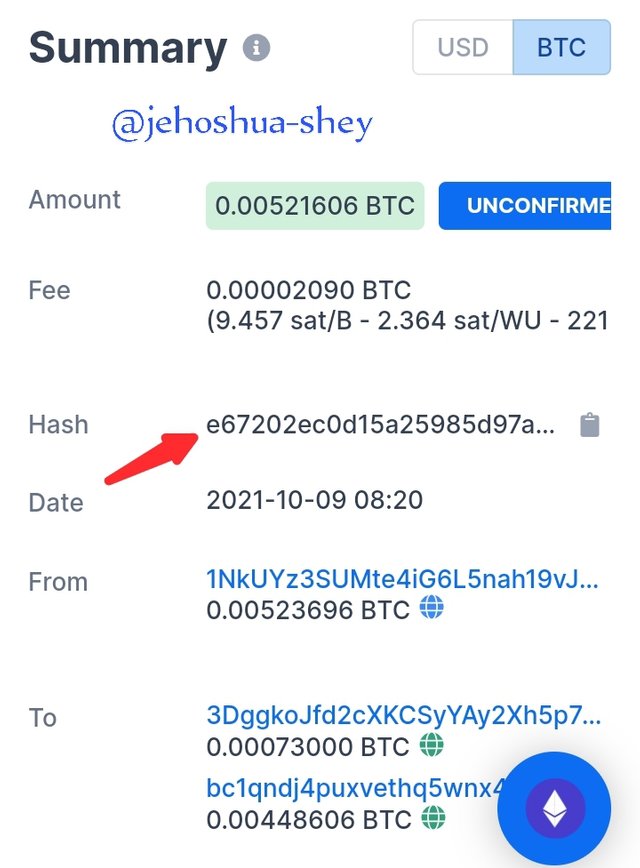
The status of the transaction is still unconfirmed.

Q.4. What is meant by Altcoin Season? Are we currently in Altcoin Season? When was the last Altcoin Season? Mention and show 2 charts of Altcoins followed by their growth in the most recent Season. Give reasons for your answer.

Altcoins are all other coins that are not Bitcoin. These coins form a separate category of coins such that coins can be categorized as bitcoin and altcoins.
Each coin has a Market Cap and they all total to give the Cryptocurrency Market Cap. Whenever a coin has a Market Cap which forms a greater percentage of the total Cryptocurrency Market Cap, we say it's that coin's season. Usually, BTC or altcoins are the types of coins referred to here.
Whenever bitcoin is dominating the market (i.e it's market cap forms a greater percentage of the total Cryptocurrency market cap), we say it's bitcoin season but whenever bitcoin is not dominating, it's regarded as altcoins season.
To check if we're in an alt season, let's check the bitcoin dominance on CoinmarketCap.
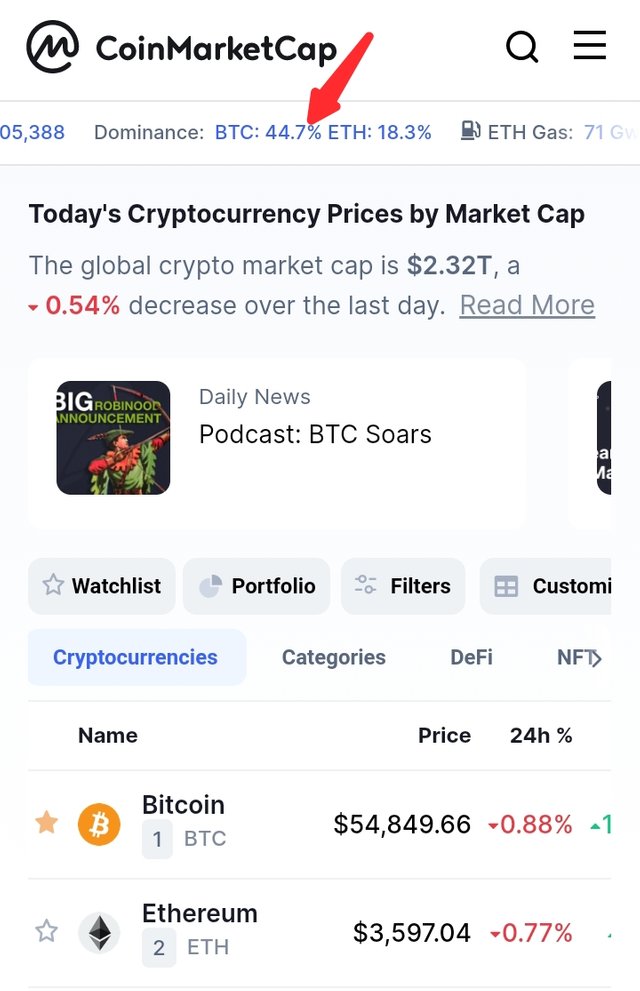
At the beginning of the year, Bitcoin was dominating with about 66% of the total Market Cap. Currently, we see bitcoin having less than 50% of the dominance, with 44.7%.
By the Market Cap dominance criteria, we are in the alt season.
Aside from this period, the last altcoins season was in 2018, when Bitcoin's dominance fell to as low as 32.81% in January 2018. As at May 2018, BTC dominance was still below 40%.
Here's a chart showing the chart of Bitcoins and several altcoins including Ethereum and Ripple (XRP) during the most recent altcoins season.
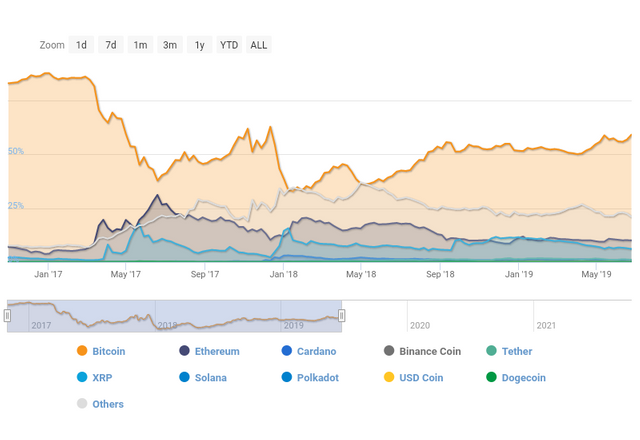.png)
Source

Q.5. Make a purchase from your verified account of the exchange of your choice of at least 15 USD in a currency that is not in the top 25 of Coinmarket (SBD, tron or steem are not allowed). Why did you choose this coin? What is the goal or purpose behind this project? Who are its founders / developers? Indicate the currency's ATH and its current price. Reason for your answers. Show Screenshots.

They coin I decided to buy was MANA and I bought it on Binance.
Here are some screenshots

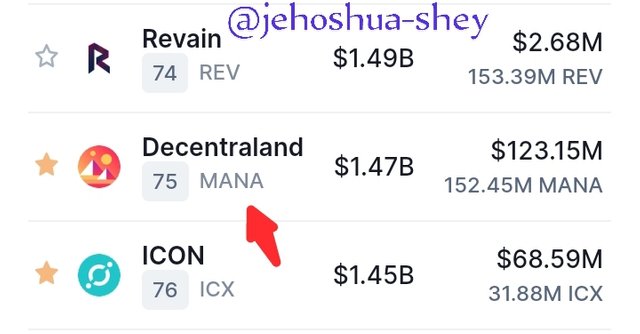
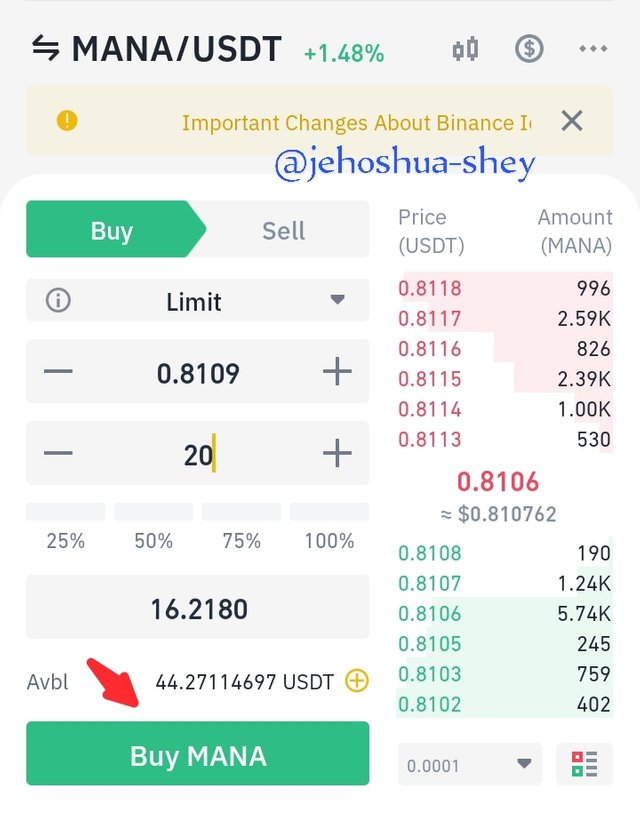
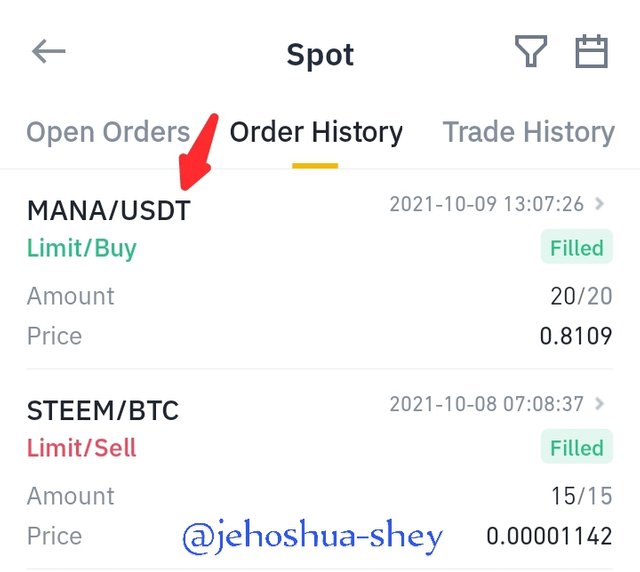
I chose to invest in MANA because it's the native token of a highly prospective project - decentraland. Decentraland is a virtual reality platform built on the Ethereum blockchain where users can buy, own, and trade virtual properties.
Decentraland has two tokens, MANA and an NFT token called LAND. To obtain LAND, MANA must be burned. This is what I reckon makes the MANA token prospective.
On the Decentraland platform, virtual properties created or bought can be sold as NFTs and to acquire them, a user must possess the LAND tokens. To acquire LAND tokens, the user needs only burn MANA thereby reducing the amount of MANA in circulation and also, increasing demand for LAND tokens will lead to increased demands for MANA tokens.
Currently, on CoinmarketCap, MANA is ranked 75 with a Market Cap of $1,483,896,074 and unit price of $0.8169. it's 24-hr volume is $120,517,306 showing lots of activities on the token. The token has a circulating supply of 1.82B MANA which is quite less than the total amount already created which is 2,194,047,627. The token however seems to have no official supply limit.
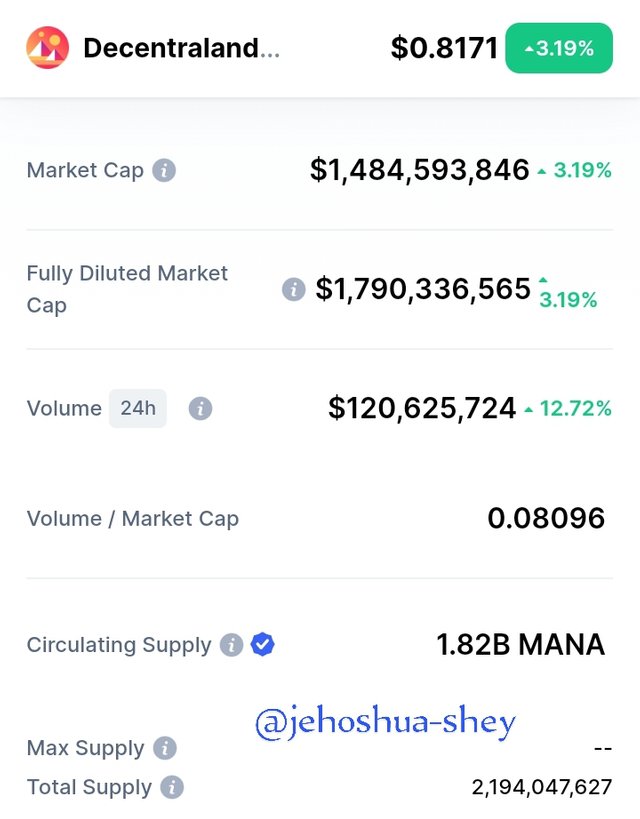
MANA boasts of an ATH of $1.56 which makes its ATH about a 100% away from its current price.
Here's a list of the reason why I chose MANA
Prospective Utility
Artificial scarcity due to burning of MANA to create LAND
Huge daily trade volume above $120M
Current price lower than ATH implying that the coin is yet to boom and is worth keeping for now.

CONCLUSION

Basically, there are two types of coins, Bitcoin and the rest. The latter is referred to as alternative coins or simply altcoins. On the market Cap dominance chart, the reason why coins are categorized this way is very visible. Bitcoin is almost always worth more than the rest of the crypto currencies combined. Infact, whenever this is not the case, which is less often, it's term an alt season.
Alt season doesn't happen always and some even define it with an index making it more seldom. However, we're currently in an alt season going by bitcoin's waning dominance which is currently at 44.7%. unsurprisingly, within this period, we've seen spikes in coins like SHIBA INU, SOLANA, AXIE INFINITY, CARDANO, to mention a few.
When making investments, it's important to consider these seasons. You wouldn't want to be in the wrong season at the wrong time to avoid losses.
Thanks for reading.
Cc:
@imagen
Gracias por participar en la Cuarta Temporada de la Steemit Crypto Academy.
Continua esforzandote, espero seguir corrigiendo tus asignaciones.